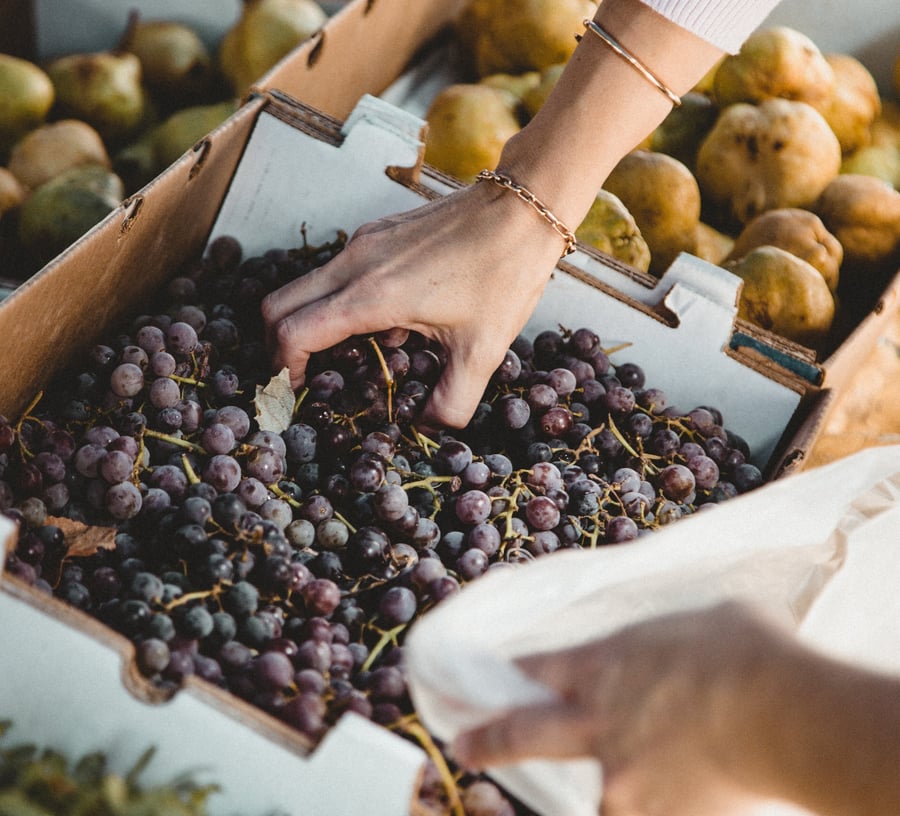Grocery retailing is being profoundly transformed. It’s predicted that within a decade, grocery shopping as we remember it will be unrecognizable. Amazon’s acquisition of Whole Foods in 2017 marked a milestone in the evolution of the grocery store, bringing an eCommerce first, technology-driven approach to a sector noted for its digital latency. The Food Marketing Institute and Nielson together estimate that 70 percent of consumers will buy at least some groceries online in the next five to seven years. In fact, online grocery sales are predicted to reach $100 billion by 2022 in North America alone.
And already over half of the world’s food retailers have begun to prepare to sell their goods online. From AmazonGo to Instacart, HelloFresh, Farmdrop and Deliveroo to Peapod, we’re seeing a surge in on-demand, digital-first services designed to make food shopping more convenient for consumers.
Like a snowball down a mountain, the shift from offline to online in the grocery sector is gaining momentum at a rapid rate. The adoption of online grocery shopping varies greatly, even across digitally mature markets such as the US, UK and France. Currently online represents only 3% of all grocery sales in the US, whereas it accounts for 9% in the UK, about 5.5% in France and is approaching 20% in South Korea. So how are some of the most innovative grocers embracing this digital-first approach? In this post we look at some of the major strategies building the online grocery sector of the future.
If you would like to discover what Forrester think about the rise of online grocery, you can download their latest report here.

Cultivating Collaborations
It’s an industry moving at pace. The success of pureplay grocer Ocado in the U.K did well to silence critics over whether the model could be profitable, its largest warehouse ships 2 million items a day, with more fresh and organic offerings than the largest U.K. brick-and-mortar grocers. The industry is currently experiencing a surge of collaborations following the success of the Sainsbury’s Argos merger, in the last few weeks it was reported that budget grocer, Iceland, had struck a deal with homeware retailer, The Range, to stock their products in-store, recognizing a synergy in their target audience and need for an expanded range.
Likewise, Walmart has made strides to reach new customers in Japan and China through their collaborations with JD.com and Rakuten. And hot off the press, we hear news that Tesco and Carrefour have struck an alliance to increase their purchasing power of own brand products and goods not for resale.

Marketplace Mindset
Collaborations are just one of the routes to success that retailers are embracing, many are enhancing their platform infrastructure and re-defining their product strategy. If we look at the Chinese market, they have highly evolved marketplace adoption. Using this model they are able to grow their online grocery business through a larger product assortment of items many grocers don’t have in-store. Resulting in increased market share.
If we turn to South Korea, one of the most digitally mature e-grocery markets in the world, superchain E-Mart sought to eradicate customer pain points and entice new shoppers to their stores, at the same time ensuring their offering was seamlessly omnichannel. To achieve these ends E-Mart built a marketplace platform encompassing its many grocery formats.
In North America, Alberstons’ who currently operate grocery stores in 35 states under 20 banners, including Safeway, Jewel-Osco, Shaw’s and Vons, have launched their own grocery marketplace to take their assortment to the next level. Their online marketplace creates an endless shopping aisle that offers customers access a wide assortment of hard-to-find products from the most experienced sellers and allows shoppers to quickly discover new items and trends that suit their tastes and lifestyles. These purchases are made directly from manufacturers and shipped to the customer.
Across the pond, earlier this year, French retail giant Monoprix announced a new collaboration to enable customers to purchase Monoprix products via Amazon Now. Whilst the Monoprix website already offers a range of services including home delivery and a click and collect offering enabling shoppers to pre-order items online before picking them up at a nearby store - this latest move increases their footprint, opening up new opportunities to grow the business. At our annual Marketplace and Platform Summit event, Regis Schultz, President of Monoprix told us “Monoprix want to offer the same amazing experience customers expect offline, and find a way to translate this online. Currently, Monoprix stores are located in towns, but our marketplace opens up a wider audience in a scalable way. In the coming years, we expect marketplace to make up 10-20% of total revenue.”
It’s a period of flux. Grocers know they can’t afford to sit still with Amazon and other giants quite literally poised to eat their lunch. What’s clear is that whatever strategy they adopt, it must enable expanded product choice, connect across physical and digital stores, meet consumer demand for convenience and be highly scalable. We believe the future of grocery industry is intrinsically linked to the rise of the platform model - only time will tell.
If you would like to discover what Forrester think about the rise of online grocery, you can download their latest report here.
If you would like to talk to us about your marketplace strategy, get in touch!
.png?width=100&height=100&name=Untitled%20design%20(1).png)
Written by Laura Hare
UK Marketing Lead, Mirakl



